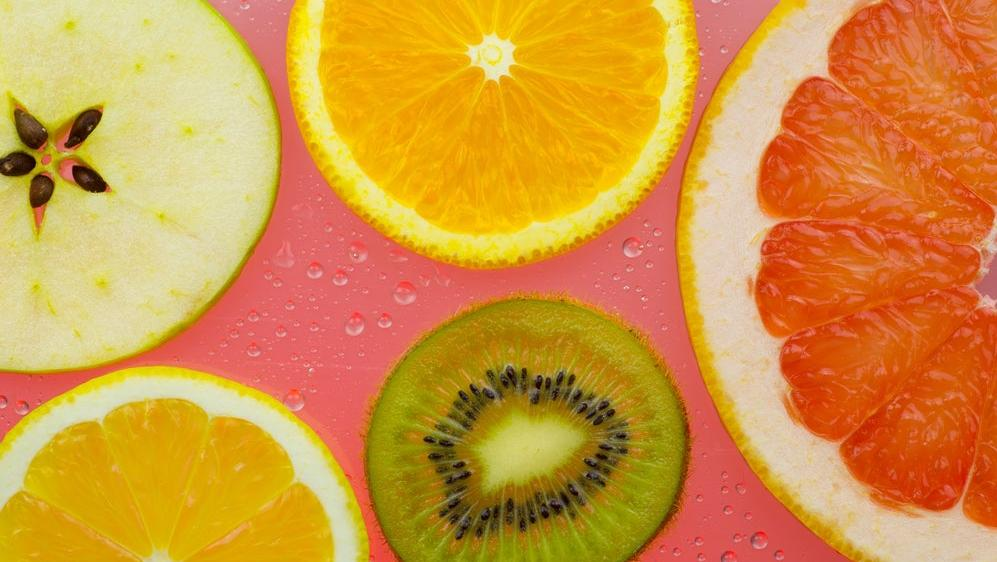Carbonate Your Fruit
Try this fizzy treat to jazz up your summer fruit salads or beverages.
In college, someone introduced me to "Gummy Bear Punch" at a party. It's just gummy bears soaked in gin and covered with champagne. That was the first and last time I ever got drunk on candy.
Many people know the joys (and potential dangers) of eating the alcohol-steeped fruit at the end of the sangria. But what if there were a way to infuse fruit with surprises that don't leave you intoxicated? Friends, that time is now. Everyone should carbonate their fruit.
Wait, why would you carbonate fruit?
New (to me) and a bit alarming, carbonated fruit is the gassy surprise I didn't know I needed in my life. The word to describe the experience of consuming carbonated fruit is definitely "effervescent." It is a bubbly, fizzy, and vivacious experience for the eater, like the fruit itself is enthusiastic. Or perhaps the word would be ebullient—both literally, like bubbling water, and figuratively, in that you can taste that the fruit is full of energy and cheer.
When fruit becomes carbonated, it still retains all of its natural flavors, unlike sangria fruit, which fully absorbs the flavor of the wine. The infusion of bubbles isn't overwhelming like horrible seltzer; instead, the carbonation imparts a subtle buzziness upon first bite. I am very interested to hear what children think about fizzy fruit. Some might dislike it because it subverts their expectations, but others might be inspired to eat more fruit because of the heightened sensory experience.
Okay, fine. I’ll try it. How do I carbonate fruit?
I really enjoy carbonating plain old sliced apples and pears, but after eating fizzy peaches, I wanted to try recreating the magic. Which is easy to do, since you don't need any spirits to achieve this spirited product (though champagne and carbonated fruit sounds delightful—maybe make it for brunch and slip some into mimosas).
The best fruits to carbonate are sturdier ones, like stone fruits or other tree fruits like apples and pears, maybe a firm bunch of grapes. You'll need to slice up the fruit in order to infuse it with bubbles, and softer fruits are more likely to fall apart and lose their form.
The internet's prevailing wisdom is to use dry ice to create fizzy fruit. For that you need a sturdy plastic (not glass) container such as a large water bottle. The problem with this plan is procuring the right amount of dry ice. It's not sold in most regular stores, and tends to be sold only in large blocks. You don't need a lot. Dry ice can be dangerous, too, which makes this a risky endeavor. Yet another problem with this plan is that you have to wait a day or two to prep the final product. And once you depressurize your dry-iced fruit, you need to eat it within 15 minutes to retain the fizzy effects.
A passable substitute for all this science is to soak the sliced fruit in a carbonated beverage for 30 minutes. The carbonation pervades the fruit, and you get a nicely soaked bubbly bite at the end. The firmness of the fruit is a variable here, and as you might know from drinking the dregs of raspberry champagne, softer fruits can become a mushy mess pretty quickly.
Uses for carbonated fruit
Besides simply eating it straight, you can use fizzy fruit in a few different ways. If you carbonate your firmer fruit like apples and nectarines and then toss it in among some berries and oranges in a fruit salad, you'll get a nice variety of textures.
You can also use the fruit in desserts. It might not retain its fizziness for long, though, so it's best applied as a garnish at the last second. Ice cream or sorbet topped with the fruit makes for a nice surprise at the end of a fun meal.
The obvious choice is to put the fruit in drinks, either virgin or alcoholic. (Fizzy fruit punch should really be all the rage by now.) Note that, as with sangria or the dreaded gummy bear punch, fruit soaked in an alcoholic beverage will itself become intoxicating, both literally and figuratively.
